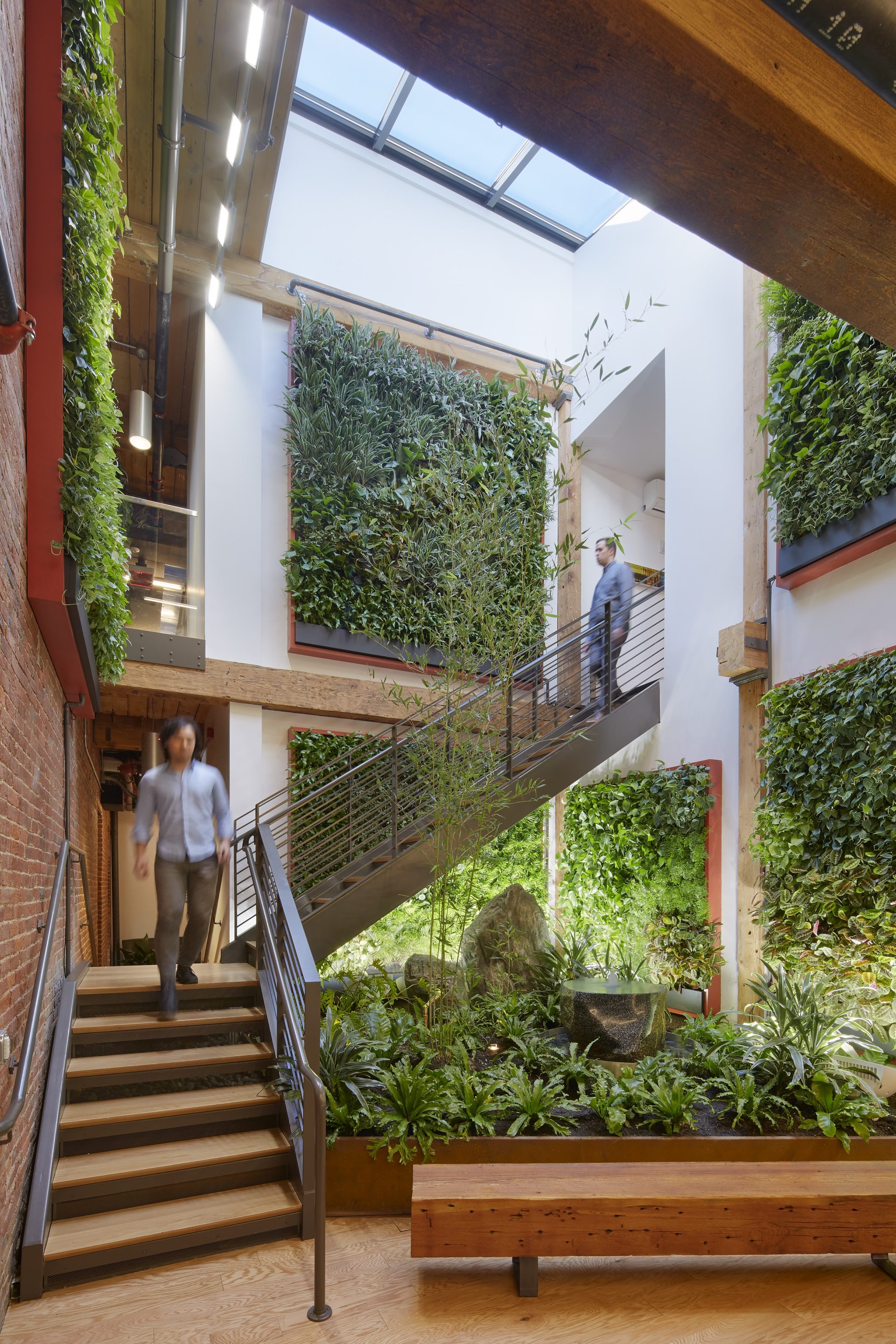With wellness and sustainability at the core of many corporate cultures, companies are looking for unique ways to showcase these values in their offices. Living walls have become an increasingly popular way to accomplish this, with some real benefits. Beyond their obvious visual appeal, living walls can improve indoor air quality, aid in noise reduction and temperature control, and increase office workers’ energy levels and awareness. They can also earn your project some credits toward a LEED Certification.
On one recent project, Chapman installed a 24-foot living wall and garden in the lobby of Toyota Research Institute‘s Kendall Square office. While the project presented some challenges, the final result was undeniably beautiful. Below, we’ve collected some points to consider when planning your next living wall project.
- Carefully review the structural strength of the involved floors and walls in relation to the materials you’ll be using. Wet soil, plants, irrigation, the garden structure, and any feature pieces can create an extremely heavy load on the existing structure.
- Lighting is one of the most important aspects of maintaining a living wall. Engaging a lighting specialist at the beginning of the process will help ensure that the correct fixtures are selected and placed appropriately so the plants can thrive.
- When choosing the plants to include, consult a professional. Their expertise will be essential in understanding the needs of your space and the light levels required to grow different plant species.
- Like light, irrigation and drainage are critical to the health of your wall and should be thought about in advance. There are specific code requirements that need to be met when tying into building drains.
- The garden is one of the last elements of a build-out, but it can also be the messiest. Be sure to formulate a plan for keeping the garden contained and clean so that new finishes and flooring don’t get damaged.
- Coordination among all trades and advance planning are the keys to a successful install. The garden is not always a stand-alone element; there are often many things happening around it — millwork, stairs, furniture, etc. Having an experienced supervisor watching over everything will help ensure a beautiful, sustainable result.
The Toyota living wall team included Bargmann Hendrie + Archetype, Inc., Zen Associates, Apex Lighting Solutions, Bolton & DiMartno, and AHA Consulting Engineers.
Chapman’s Project team included Jim Brown, Randy Davenport, Dan Stout, Nate Cote, Kevin McGinty, Delroy Wilson, Nate Russell and Rich Elliott.
Click here for more photos of the Toyota Research Institute project.


